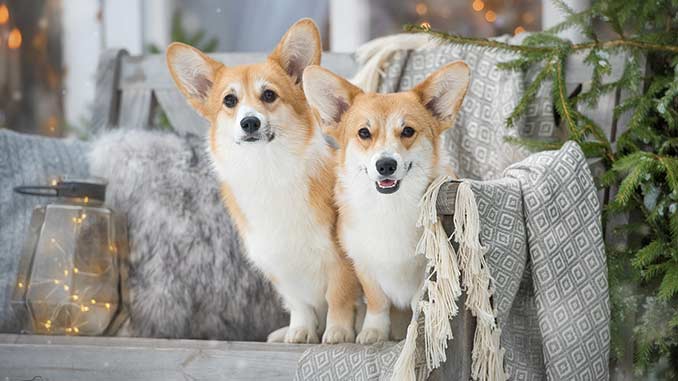If you want to have a pet in the form of a shepherd, but there is no way to keep such a large animal, you can find an alternative. There is a breed of Welsh Corgi dogs, its representatives are shepherds, only very miniature.
Their height does not exceed 30 cm. At first glance, such a dog is very similar to an ordinary mongrel, cute and lovable. But in fact, corgis have a keen mind and intelligence. They are born investigators and shepherds. Such a pet is ideal for inexperienced dog breeders.
сontents
History of the breed
Dog lovers call Welsh Corgis fabulous animals. All because the history of the breed is connected with two ancient legends:
- A Welsh legend says that peasant children, walking through the forest, saw two magical puppies. The children could not resist and took the puppies with them. Since then, the peasants have received reliable and faithful shepherd dogs.
- If you believe the ancient legend, corgis served the forest fairies as sled dogs. It is because of this that representatives of the breed actually have saddle-shaped markings on their backs in their coloring. Once the fairies saw how a shepherd could not gather the herd that had scattered across the pasture. They felt sorry for the poor fellow and gave him a couple of corgi puppies. These dogs skillfully managed the livestock and guarded the farm property.
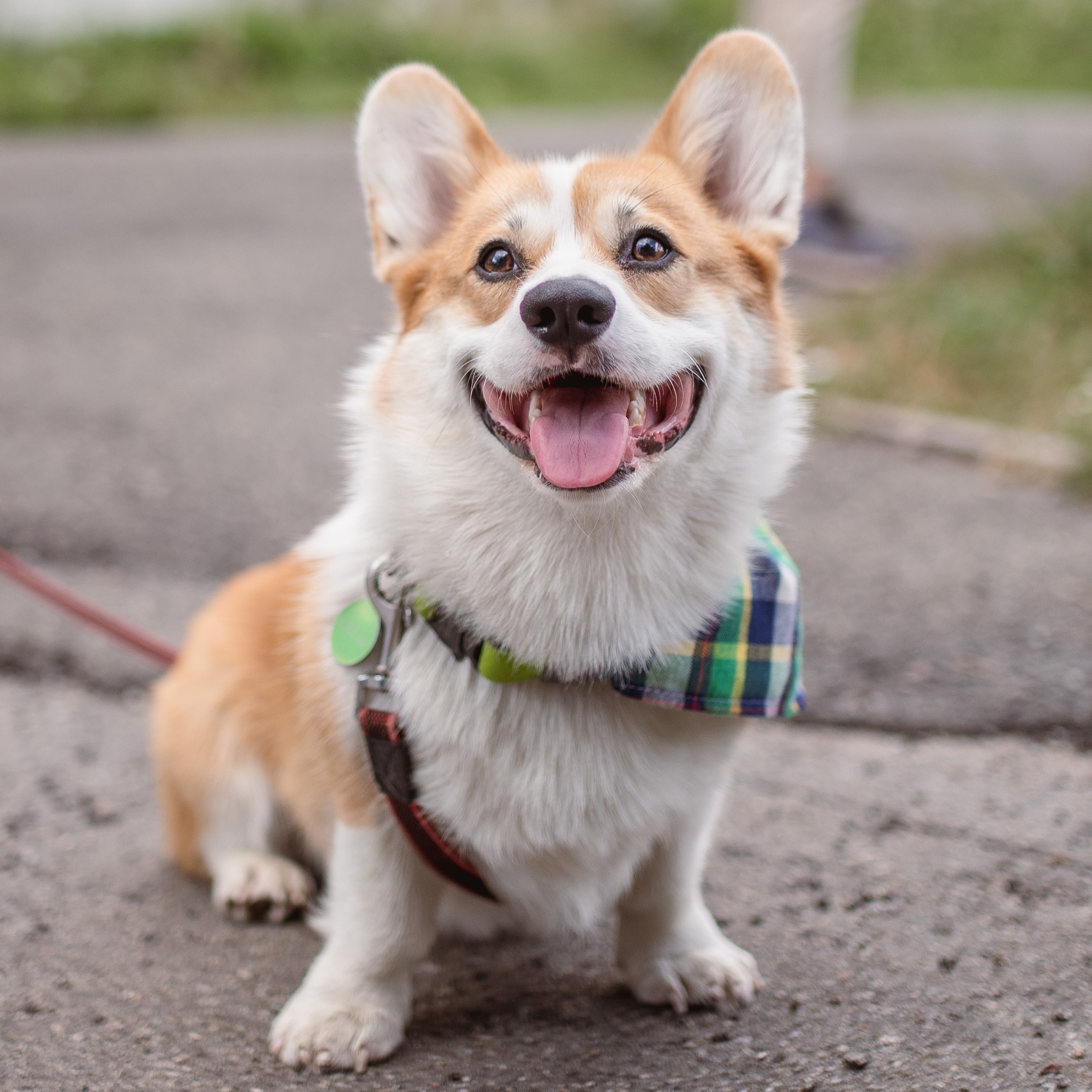
Leaving mythology behind and returning to reality, we learn that the history of the Pembroke Welsh Corgi breed goes back centuries. Excavating a settlement that existed at the turn of the 8th-9th centuries in South Wales, scientists from Cardiff University, among other finds, discovered the bones of a small dog that are very similar to parts of the skeleton of modern corgis.
Written mentions of the breed first appear in the code of laws of the Welsh king Hywel the Good, who ruled in these parts in the 10th century. According to the provisions of the law, for the killing of a corgi that was grazing cattle, its owner had the right to demand a whole ox from the perpetrator as compensation for the damage. Interestingly, no one gave more than a ram for dogs of any other breed, even if they were the property of the king. The fact is that Welsh corgis herded flocks without human intervention, independently accompanied the flock, fearlessly protected it from wolves and robbers, that is, they worked both for themselves and for the owner. The death of such an assistant was indeed a very tangible loss.
According to one version, the ancestors of today’s Pembroke were brought to the islands of Foggy Albion by the Vikings. Perhaps they were Lundehunds, the similarity with which lies not only in size, but also in the special arrangement of the ears, which prevents sand and moisture from entering the auricle. The corgi has a lot in common with another representative of the spitz – the Swedish Vallhund.
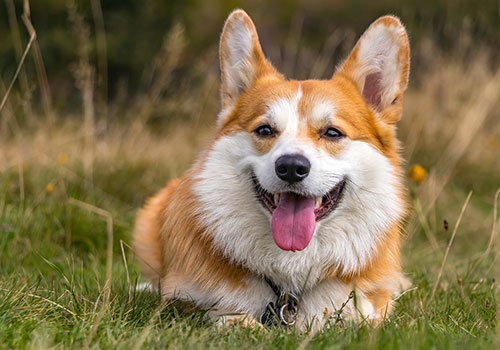
The main function of these pets in those days was herding, and we are talking not only about flocks of sheep. Corgis also perfectly looked after herds of ponies, and when the boom in poultry breeding (mainly geese and ducks) began in Wales, there was simply no better assistant to accompany these very capricious birds to the city markets. Several dogs, working as a well-organized team, delivered huge flocks of birds to their destination with almost no losses. It was also important that the representatives of the breed did their job without barking, without nervous the bird.
The Pembroke Welsh Corgi originates from the Welsh county of Pembrokeshire. This area is separated by the Cumbrian Mountains from the county of Cardiganshire, where the Cardigan Welsh Corgi comes from. Despite the similarity of names, these are still different dogs. Due to their isolated existence in certain mountainous areas and, as a result, close interbreeding, each breed has acquired characteristics unique to that type of dog.
The Pembroke Welsh Corgi is believed to have descended from small breeds. Classified as a sheepdog, it was long used to guard and herd herds, including cows, ponies and geese. It worked well with large Border Collies. The word Corgi comes from the old Welsh language, meaning “working dog” (Cur ci) or “dwarf” (Cor ci).
The breed was honored by Queen Elizabeth II, who fell under the spell of this fox. She fell in love after being given 2 puppies named Dookie and Jane as a child. In 1934, the English Kennel Club officially established the difference between the Pembroke and the Cardigan. Finally recognized by the International Cynological Federation (FCI) on November 13, 1963.
In North America, the Pembroke is better known than its closest relative, the Cardigan, although the latter arrived on the continent three years earlier in 1931.
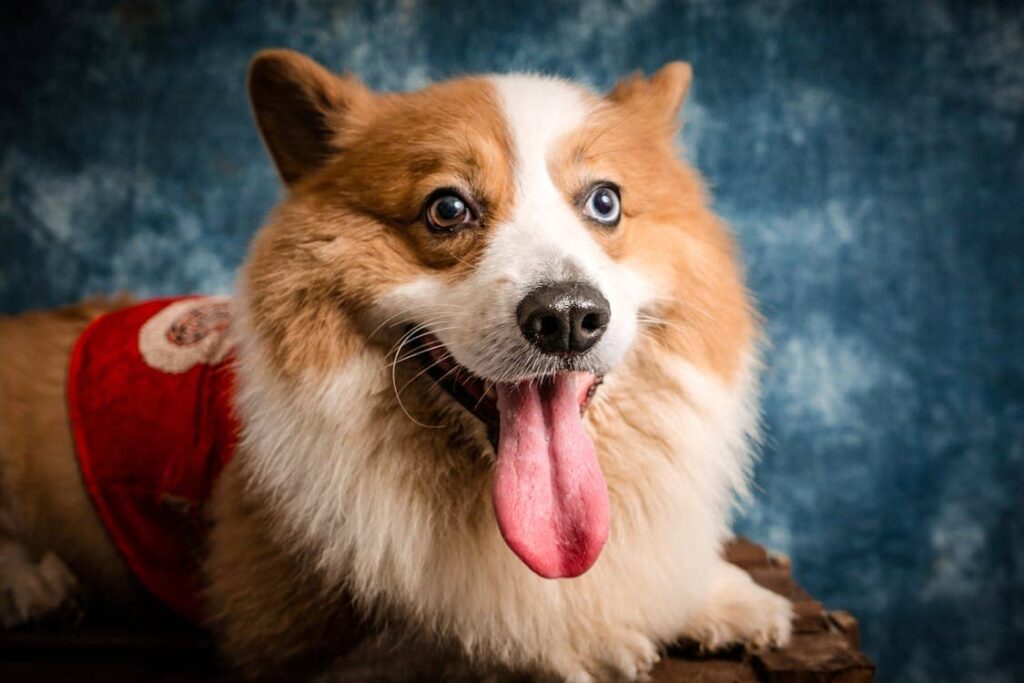
Description
A short-legged dog with a strong build, quite compact. It looks like a fox. Sociable and friendly, a pleasant companion. Capable of the most ridiculous things, because it is not really afraid of anything. Today it is mostly used as a pet as a playful and happy family member.
Corgi is a dog that is ideal for a large and friendly family. It feels great both in a city apartment and in a country house. The main character traits of the animal are cheerfulness, friendliness and activity. With a practically complete absence of aggressiveness in behavior, the corgi is a brave dog with a highly developed intellect. Pembroke is a breed of dogs that really need human companionship. Keeping it on the street, and even more so on a leash, is absolutely unacceptable. Welsh Corgi Pembroke is very sensitive to the mood of its owners and will never bother you inappropriately. They are very active and love outdoor games, they are well trained.
Corgi’s love for children has already become a legend. You can leave even a baby with him without any fear – Pembroke will stoically endure all his pranks.
Interesting fact – Shepherd breed, which occupies 11th place in the top of the smartest dogs.
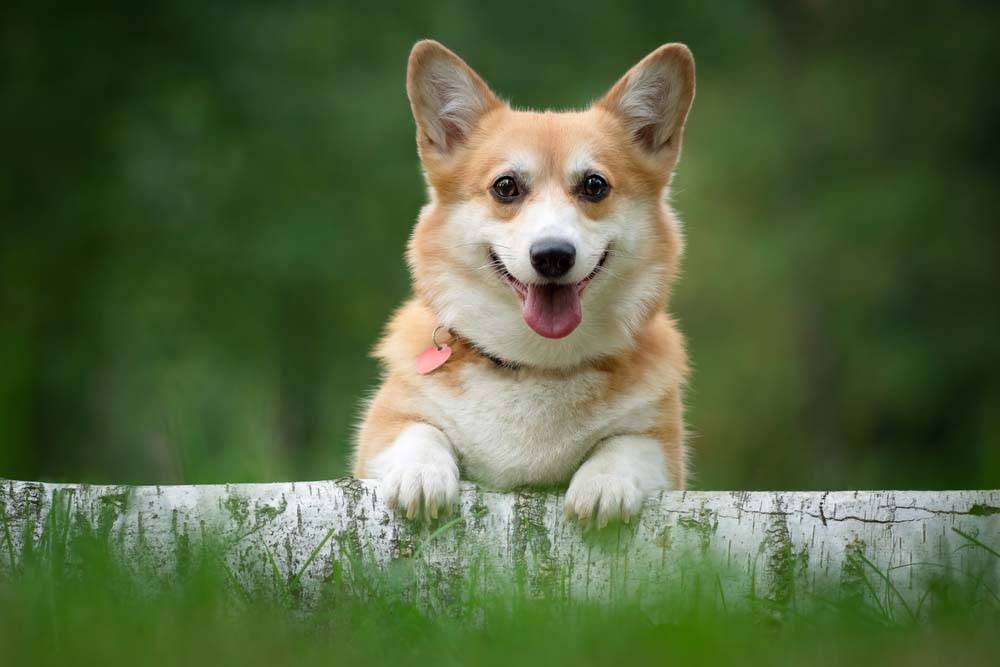
Features of the breed
The uniqueness lies primarily in its versatility, which makes it suitable for any situation. They have a natural tendency to please their owners and have fun with them, regardless of what needs to be done. Will spend hours at your feet (on the sofa) while you rest, or follow you in all your actions. A tireless shepherd, has a joyful, determined character that reflects the whole essence of a shepherd’s assistant. Very energetic.
Can become a wonderful friend, devoted to the owner and family. Do not forget that this is actually a big beast in a small body, and a receptive one. Full of cheerfulness and courage, demonstrates a great inclination to work. Excellent in:
- agility,
- tracking,
- obedience.
The look is proud, always alert. He is very gentle and knows how to adapt to any circumstances. An ideal pet for children and the elderly. Will take care of the protection of the house, but will not be aggressive. They are very intelligent, integrate what a person expects from them, love to please their owners, therefore they are very caring and affectionate. Working instincts have allowed the dog to be used as:
- a companion to help the disabled;
- a searcher;
- a dog working on debris.
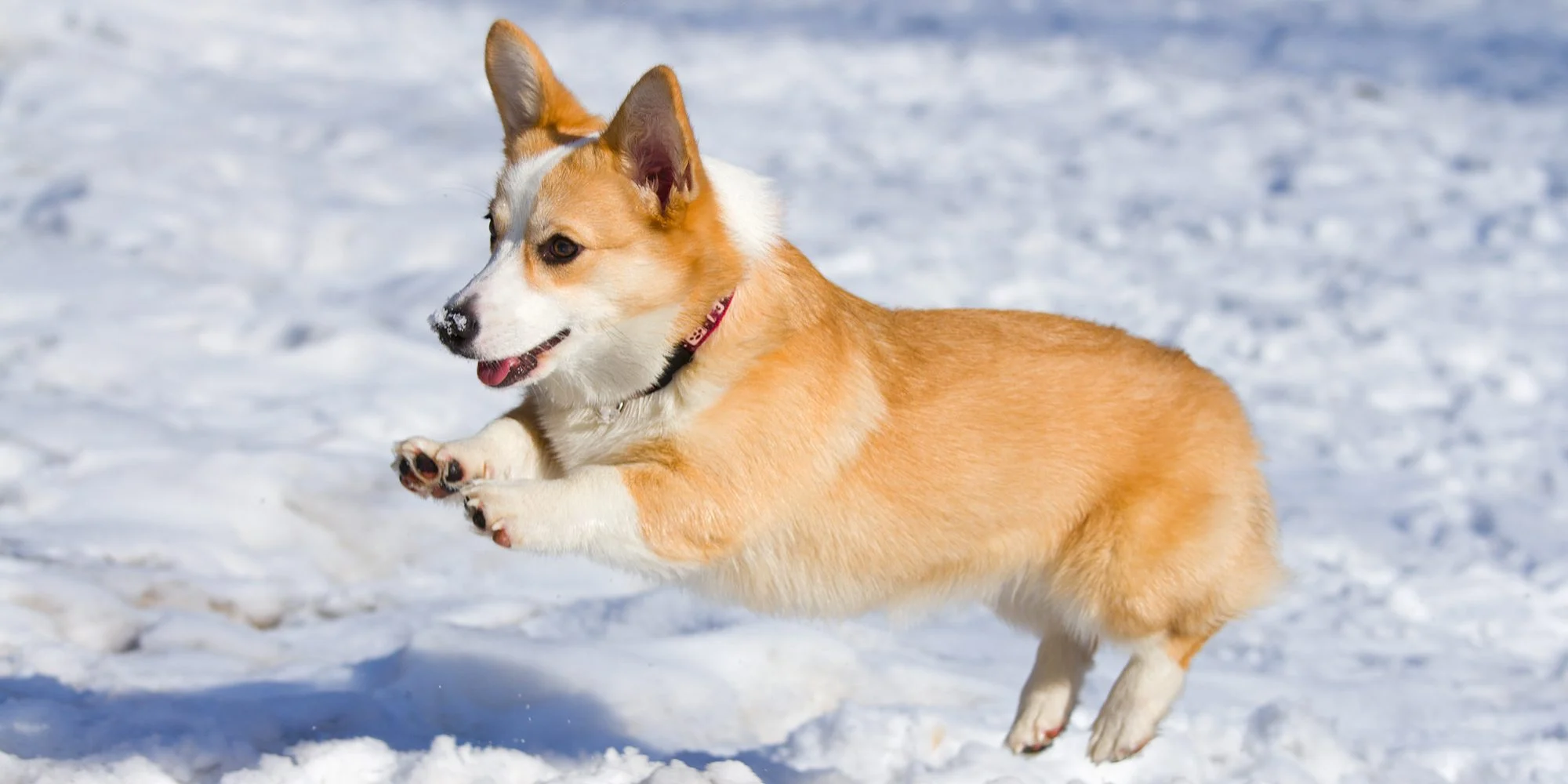
Their small size and energy allow them to follow their owners everywhere. However, be careful when traveling, which requires a lot of climbing and descending stairs: this is harmful to a long back. Short legs do not limit endurance in any way – agile dogs are enthusiastic about any sport and should not lead a sedentary lifestyle. Owners, regardless of their age, should be active enough and available to offer the dog regular long walks.
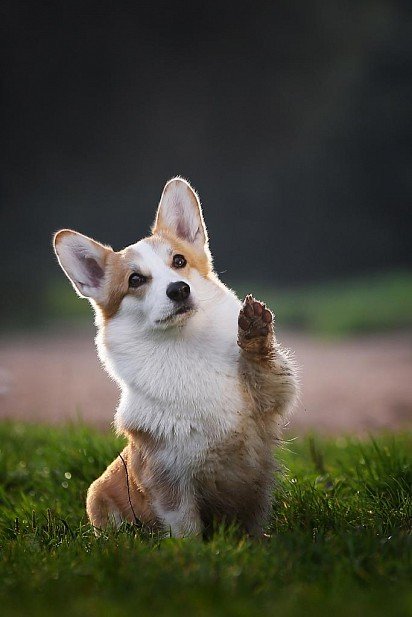
Head. The corgi’s head resembles a fox’s, the skull is quite wide and flat between the ears. The muzzle is proportional to the skull in a ratio of 3:5, tapering slightly towards the nose. The transition from the forehead to the muzzle is moderately pronounced. The nose is always black.
Jaws and teeth. The corgi’s jaws are strong with a well-pronounced correct scissor bite.
Eyes. Small in size, rounded. The color of the iris is brown, harmonizes well with the color of the coat.
Ears. Medium in size, sharp, with slightly rounded tips. A conditional line drawn from the nose lobe through the center of the eye should cross the tip of the ear or pass very close to it.
Body. Medium. The chest is rounded, slightly ovoid in shape and of moderate length. The topline is even, with a possible slight depression in the withers.
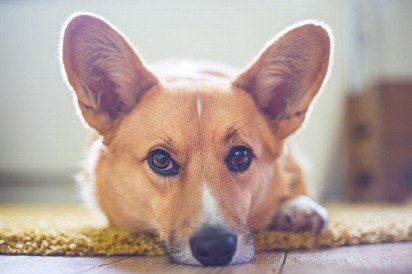
Tail. Short. Possible options – docked or natural. If the corgi’s tail is not docked, it should be located in line with the top, carried quite low and in no case thrown over the back.
Limbs. The pasterns of the Pembroke Welsh Corgi’s forelimbs are short and as straight as possible. The bones are wide to the paw itself, without narrowing. The elbows are set close to the sides. The shoulders are harmoniously laid and are at right angles to the forearms. The hind limbs are short and strong. The angles of the knee joints are good, the pasterns are straight. The bones are strong.
The paws are oval in shape with strong fingers, the two central ones slightly protruded forward. The pads are dense, well filled. The claws are short.
Coat. Straight with a good dense undercoat. It is never soft and wavy, nor is it wiry.
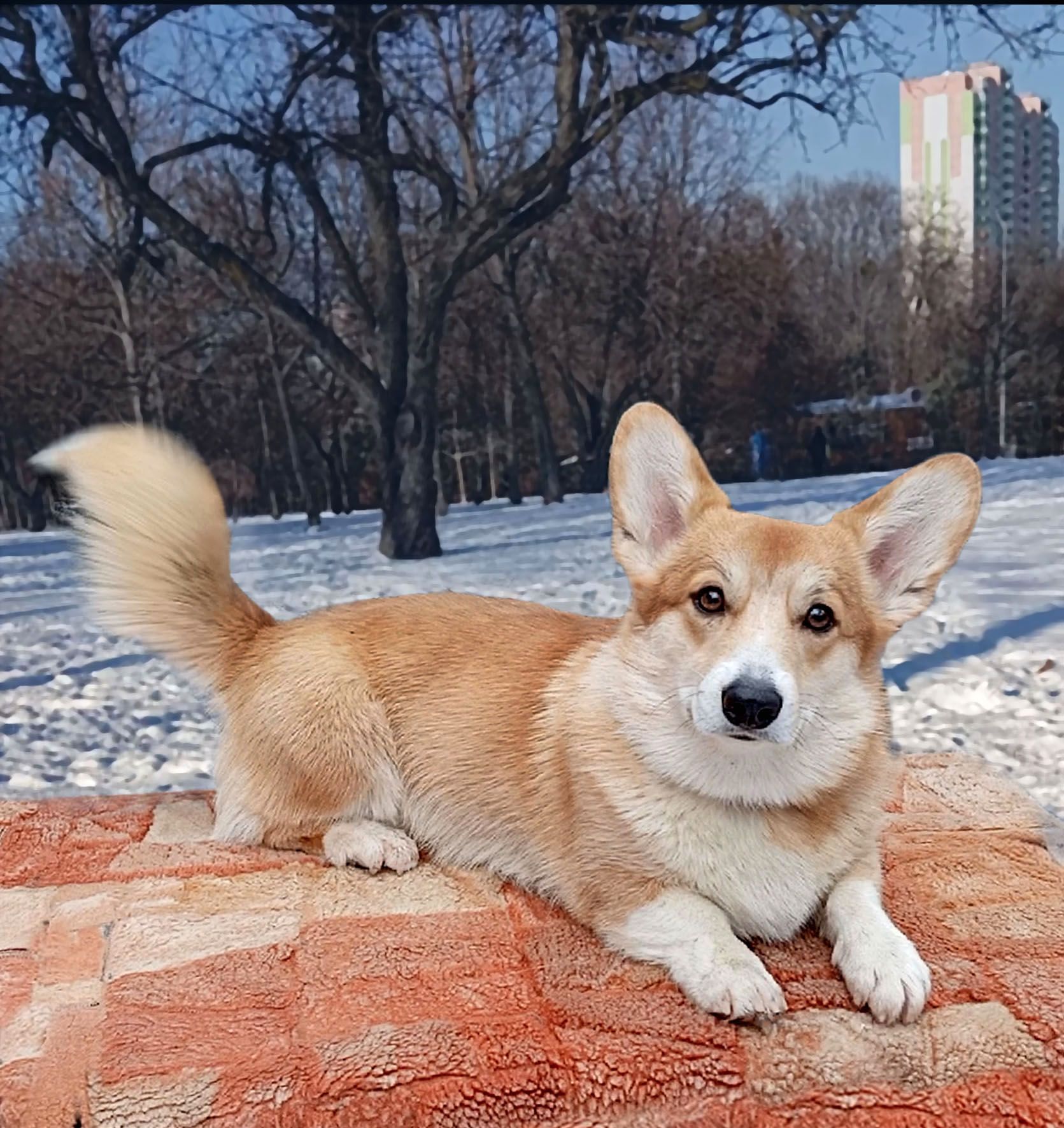
Breed Standard
The Welsh Corgi Pembroke is a stocky, compact and strong dog. The length of the body (from the withers to the base of the tail) is approximately 40% greater than the height from the withers to the ground (25-30 cm).
The weight of the animal is proportional to its height and is up to 12.7 kg for bitches and no more than 13.6 kg for males.
Exhibition representatives of the breed should have a lower weight – about 11.4 kg and 12.4 kg, respectively.
The Pembroke is inferior in size to the Cardigan. The limbs are very short, straight, strong. There are white markings on the paws. The head is more elegant and smaller than that of the Cardigan. The ears are medium in size, erect. The eyes are not large, oval in shape. The muzzle resembles a fox’s (without a cunning expression), there are white markings on it. The contrasting line around the mouth creates the appearance of a smiling dog. The bite is scissor-shaped. The physique is good, long, but not as much as that of a dachshund. The body is strong. The chest is rounded, the loin is short.
The coat is of medium length, tight-fitting, water-repellent, with a short, dense undercoat. A beautiful “collar” around the neck. According to the standard, curliness is unacceptable. Color: sable, red, black with tan, fawn. White spots are allowed. Pure white corgis are not allowed.
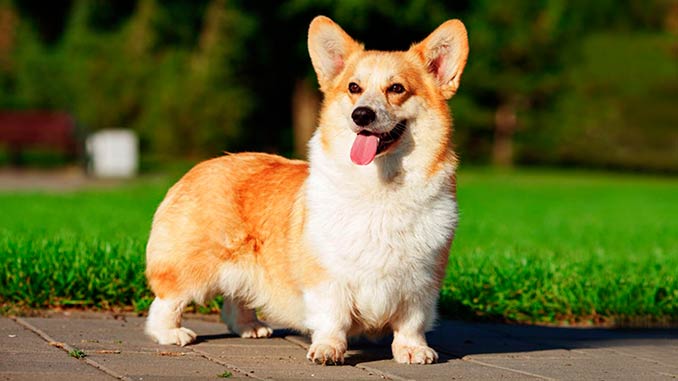
The tail of the Welsh Corgi requires a separate discussion, which is one of the main differences between the Cardigan and the Pembroke. The Cardigan has a rather long tail, resembling a fox’s. It is not thrown over the back. When the dog moves, it holds it above the back, and when standing, it lowers it low.
In most cases, Pembroke dogs have a docked tail from birth. In the past, puppies born with a tail had it docked. Since 1980, a ban on docking has been introduced in Europe. Since then, Pembroke dogs can be either docked or have tails of varying quality, but in any case they resemble a fox’s tail.
The disadvantages of the Welsh Corgi breed include:
- incorrect tail position;
- too deep chest, which interferes with the animal’s movements, a barrel-shaped or flat chest shape;
- high position of the dog’s rump or, conversely, excessive inclination of the topline;
- straight hocks, narrowly set limbs;
- aggression or timidity in character;
- any deviations from the free natural gait (chalk walk, “strolling”, “dumping” step).
Males should have two normally developed testicles clearly expressed, fully descended into the scrotum
Character of the Pembroke Corgi
Known for its lively mind and fearless character. An active, full of life dog that does not want to miss anything and always strives to be the center of events. The dog is convinced that he is a big dog in a small body. A young or old shepherd will run tirelessly. He appreciates many games that give him the opportunity for intense mental stimulation.
Today, the Pembroke, as before, is able to herd farm animals much larger than himself. He relies on his speed, lightning quick wit. Originally used as a versatile companion to hunt rodents and protect farms when not herding.
They especially enjoy participating in:
- agility competitions;
- herd management;
- walking;
- running;
- catching frisbees;
- obedience games.
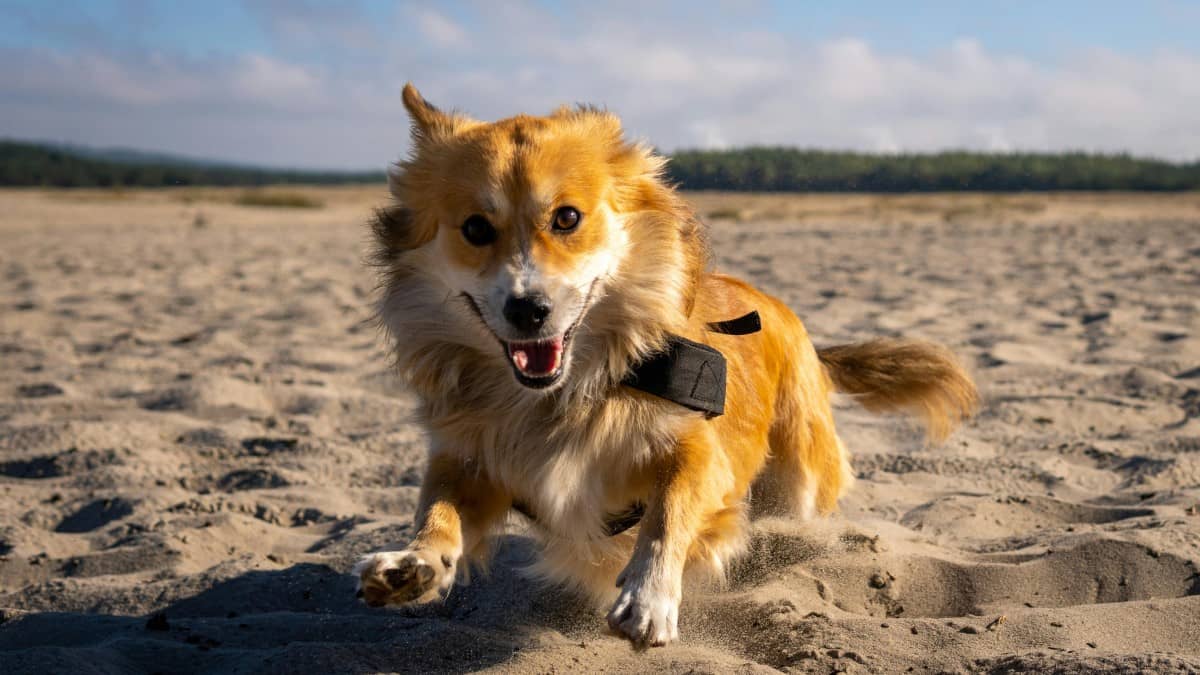
Welsh Shepherds need companionship and energy expenditure to be happy. They quickly get bored alone, and then behavioral problems arise. Excessive barking is usually associated with boredom or lack of company. Therefore, it is not uncommon to get a second pet so that they do not get bored.
If a Corgi grows up with a cat, he will be able to get along peacefully with it without any problems. It is a sociable animal that appreciates any company. Unfortunately, like some shepherds, the dog has a tendency to bite the ankles of its “flock”, which can be you, children, other animals. Monitor this behavior from an early age to stop this bad habit.
Strangers are treated well, without rejection or unreasonable aggression, but only if they do not perform a guard function. Yes, you are not mistaken, Welsh Corgis can really be excellent guard dogs, because they bark very loudly and are able to raise the alarm for any reason, and sometimes even without.
Accordingly, if they realize themselves in this capacity and see a stranger trying to climb over the fence, there will be no peace in the whole district. Moreover, the dog may even try to stop the intruder despite its modest size. In fact, they are rarely used in this function, because the breed is expensive and belongs rather to the elite. Rather, this dog is a wonderful companion for any family or single owner, it does not matter.

Pembroke Corgi Puppies
To increase your chances of getting a healthy puppy, choose a responsible breeder who offers health guarantees for the puppies, avoid flea markets, and be wary of pedigree puppies at an unusually low price.
How to Choose a Puppy
Ideally, visit the breeder before you bring your new family member home to discuss the details in detail and meet the puppies and parents. The first few weeks spent with the litter have a strong impact on the puppy’s future behavior. It’s important to choose a breeder who takes this into account.
Socialization of young individuals is extremely important. He will have to meet cats, relatives, and strangers in order to feel more comfortable in their presence. It is also important to introduce your pet to a variety of environmental noises that will help him be less nervous when he reaches adulthood.
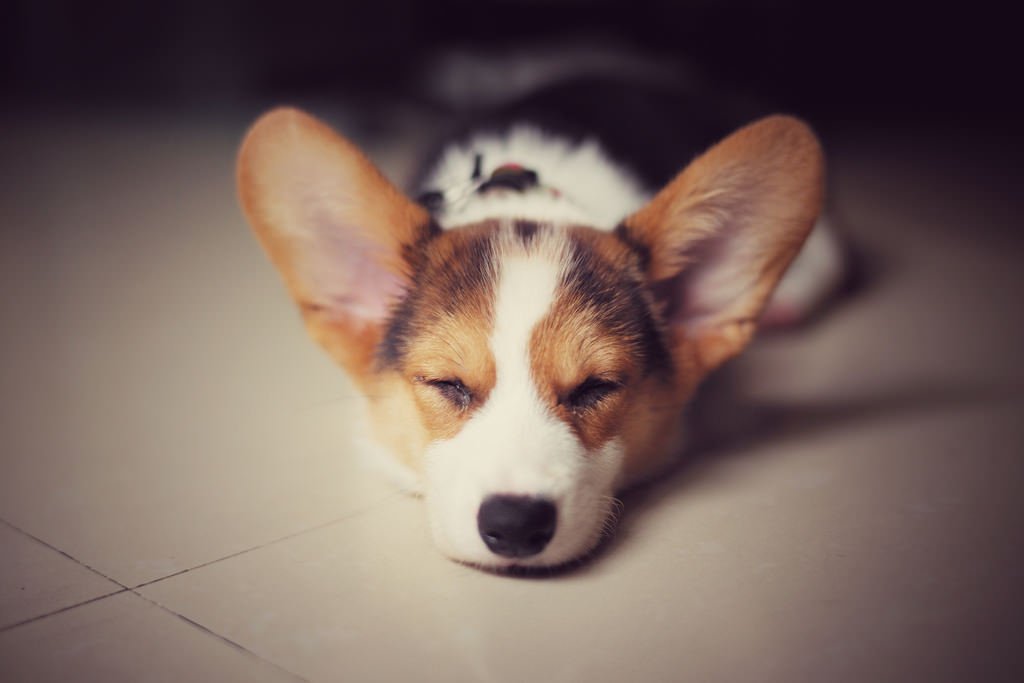
Remembering that the Pembroke is a breed of dog where the puppy receives 75-80% of its hereditary traits (health, character, appearance) from its mother, buy a small corgi from a bitch that has proven itself well.
Be sure to pay attention to the temperament and character of the baby. The puppy should be cheerful, curious and even somewhat obsessive, everything should interest him.
A purebred dog must have a puppy card indicating the organization under whose jurisdiction the breeder or kennel selling you the animal falls. In addition, there must be a veterinary passport with notes on all vaccinations.
When choosing a puppy, pay attention to the conditions in which its parents are kept, ask about their achievements in the exhibition career, lifestyle (apartment or country living).
It is better to buy a baby that was born as a result of a planned mating.
As for external signs, then:
- you should not be confused that the ears of a one and a half month old corgi may not yet be standing – they will definitely acquire a vertical position in some time;
- the eyes of a baby Pembroke are always dark in color and round in shape;
- the expression of the muzzle should be mischievous and cunning – “fox-like”, which is very appreciated in the breed;
- in males, especially if they are planned for breeding work, at the age of 45 days both testicles are already well defined in the scrotum.
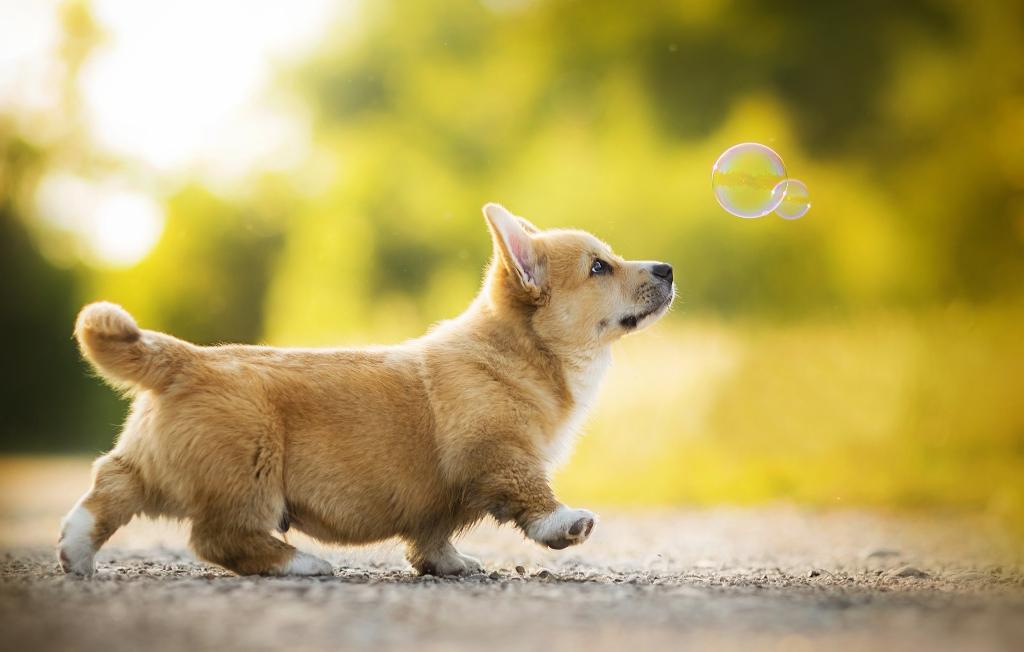
Another pressing question is who to choose – a boy or a girl? You will not find a difference in character, temperament and intelligence.
Physiological differences will later require you to take a different approach to the conditions of keeping a female or male.
When you first meet a corgi, you should feel that this is your puppy. And even if it is the last in the litter, buy it without hesitation. It is the last not because it is bad, but because it was waiting for you.
The cost of puppies
The price of puppies will depend on gender, origin, pedigree of parents, compliance with standards. A girl will cost more.
Welsh Corgi Pembroke dogs are in the top 5 in terms of cost. And can the favorite breed of the English royal house be cheap? But it is not only about the popularity and rarity of the animal. The fact is that animals are very difficult to breed. First, finding a suitable pair for mating is not easy at all. Sometimes owners have to travel even to other cities, overcoming considerable distances. But even a successful meeting of a pair of Pembroke does not guarantee anything. Practice shows that in almost 80% of cases, females of this breed undergo a cesarean section for obstetric assistance. This is followed by nursing, feeding the puppies, their mandatory vaccination and registration of relevant documents. All these costs are compensated, at least in part, by the cost of the puppies.
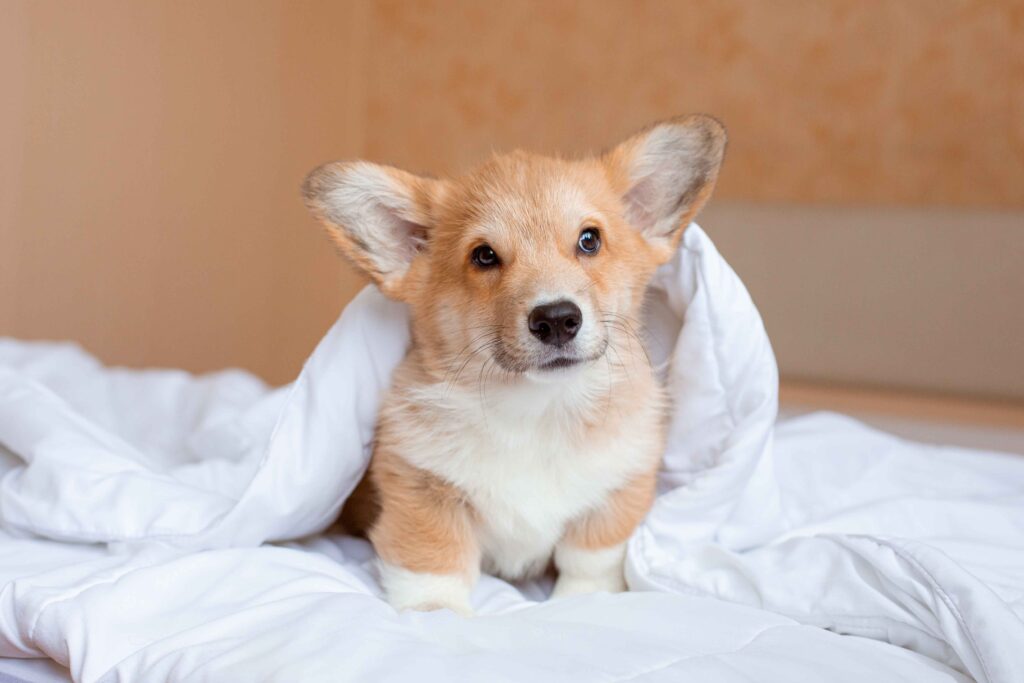
There is a certain price gradation for puppies of this breed:
A pet-class puppy, which will not participate in exhibitions due to any deviations from the breed standard or the lack of a full package of documents, you can buy for $ 650-700. If it is cheaper, they want to deceive you: either it is not a corgi, or the puppy has serious health problems.
A breed-class dog will “pull” for $ 800-1000. The puppy is provided with all the necessary documents, vaccinated, and meets the breed standards.
A show-class corgi is a child of champion dogs. You are practically guaranteed a healthy elite dog with every chance of making a brilliant exhibition career. The price for such a puppy will start at $ 1500, and often higher.
The cost of a Welsh Corgi Pembroke puppy is directly dependent on the purity of the breed, health and prospects. The price for a girl will be higher than for a dog.
When planning to purchase a representative of this breed, decide for what purpose you want to buy this wonderful dog. In any case, whether it is a pet-class puppy or an elite baby, you will never regret your decision, because the Welsh Corgi Pembroke is, first of all, a kind, intelligent, cheerful and loyal friend.
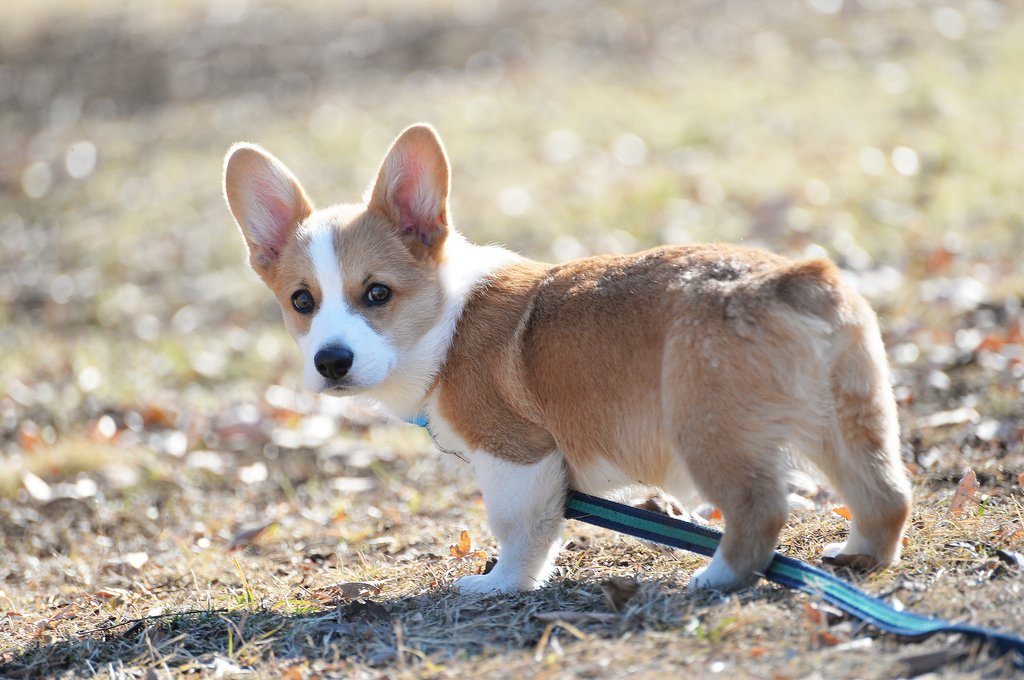
Mating (mating) of a Pembroke Corgi
The first heat in bitches is approximately 7-8 months. The first mating is recommended for 2-3 heats. Mating is carried out on the 13-15th day from the beginning of heat in the most natural conditions.
You will notice that the belly is rounding, and the bitch is gaining weight 1.5 months after mating. Signs of depression may appear during pregnancy. Gestation lasts 63 days. There is no need to change the amount of food or limit physical activity.
On the eve of birth, the female will begin to worry, restlessly rush from side to side, scratch in corners or on the bed. She will try to make a “house” for the babies. If you remember the date of mating, your veterinarian will calculate the date of birth. A few hours before giving birth, the female will have difficulty breathing, her temperature will drop 1-2 degrees below normal, she will lose her appetite and urinate frequently.
Plan a place that will allow the mother to go and come back, but where they will be fenced in. Any box larger than the dog will work well. Fill the “house” with towels, blankets, old sheets. There are an average of 2-5 babies in a litter.
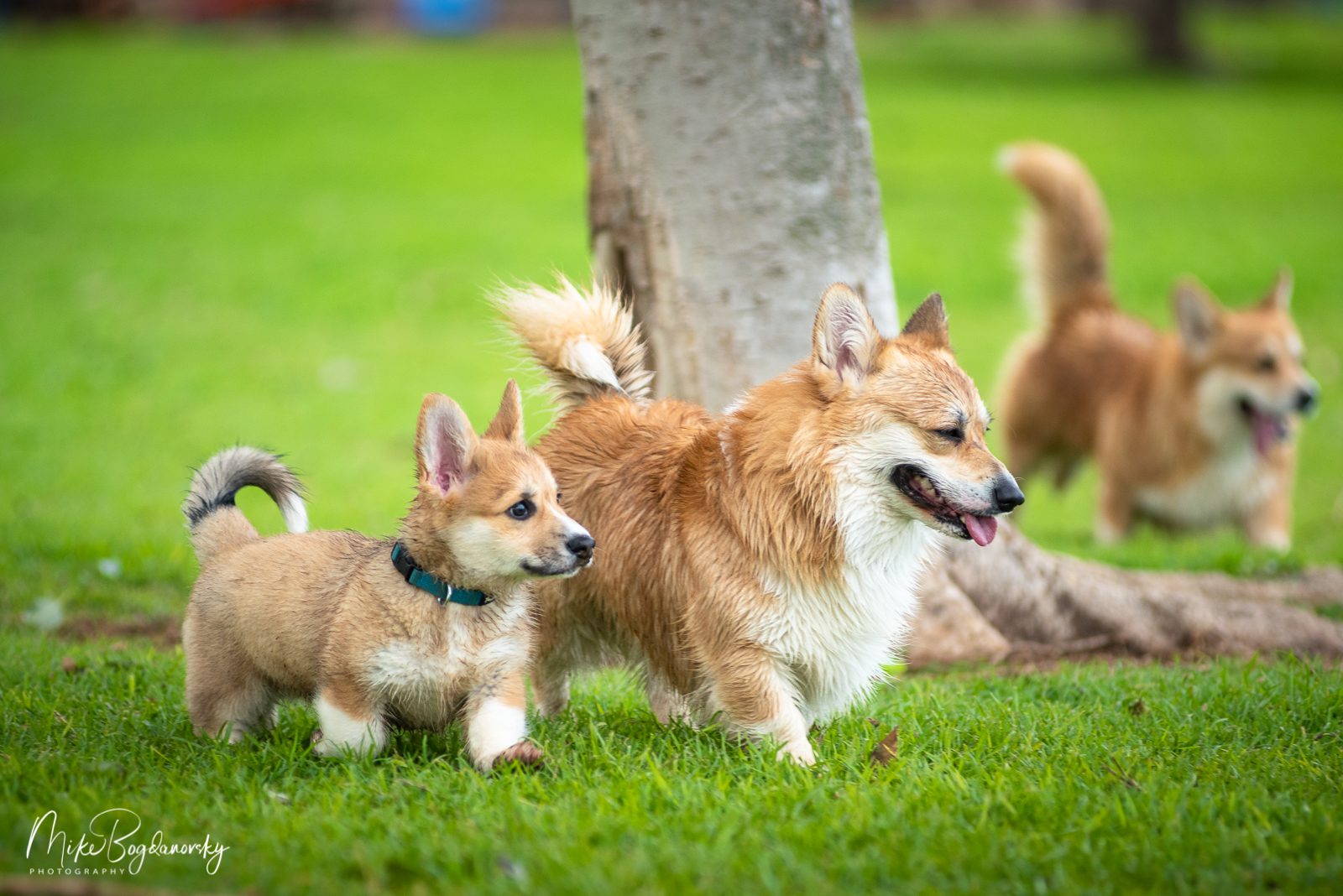
Maintenance and care
Corgis are quite suitable for apartment keeping, because they are small and have practically no specific smell. But the owner should take into account that such a pet needs physical activity, so it will be necessary to walk it twice a day for at least 40 minutes. During walks, try to give the dog plenty of opportunity to run and frolic.
But if the needs for physical training are not met, your pet will have a good chance to translate its discomfort into inappropriate behavior. It will not only start destroying things and furniture, but will also try to escape. After all, even living in a house with a garden, you need to walk outside for a long time. Escape, as a rule, is a consequence of lack of attention, physical exercise, boredom, loneliness. Do not forget to fence your garden to avoid trouble.
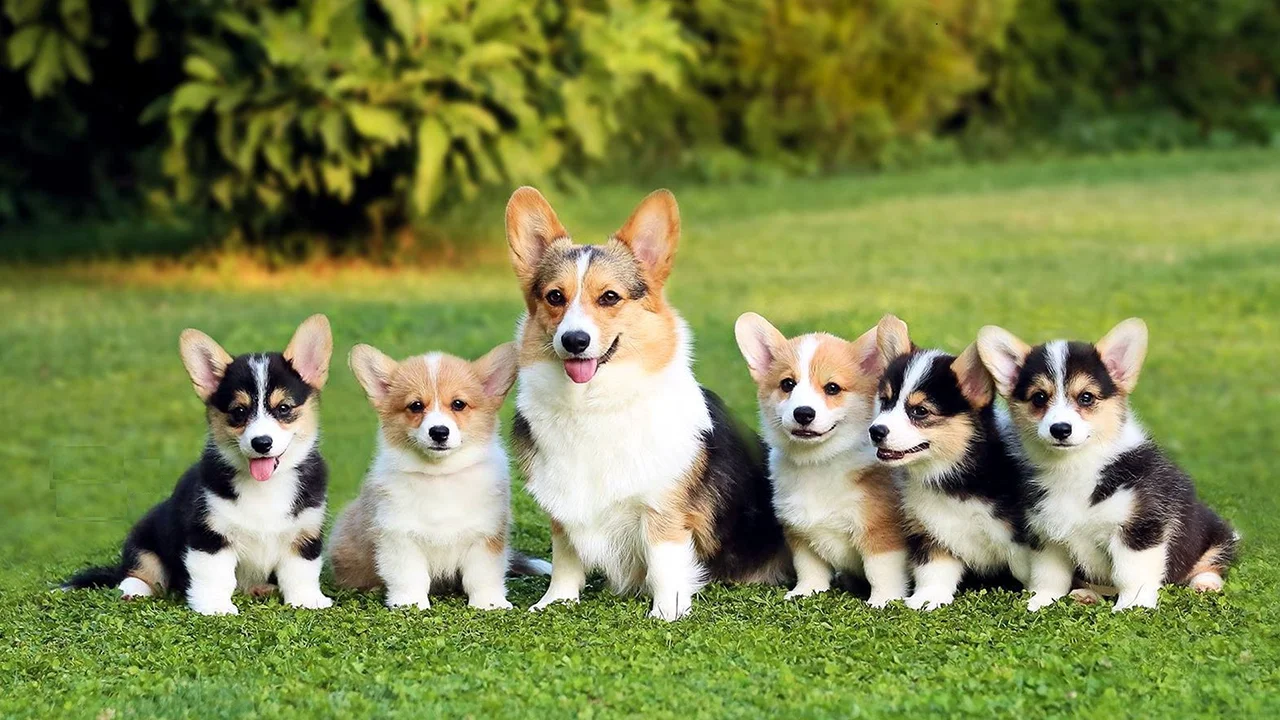
To be objective, Welsh Corgis tolerate bad weather conditions well and prefer to live outdoors.
There are no difficulties in care, follow the rules below and your pet will have a well-groomed, healthy appearance:
- Comb the Pembroke 2 times a week. During molting (2 times a year), representatives of the two types of Corgi should be combed daily, ridding the pet’s coat of dead hair.
- After each walk, the dog’s stomach gets dirty due to its short limbs, it needs to be wiped with a damp cloth. If the weather is rainy, the pet’s paws and stomach must be washed.
- Regular, scheduled bathing is carried out once every 6 months. Experienced dog owners time bathing to the period of intensive molting.
- Pay special attention to cleaning and examining the teeth. Corgis often suffer from periodontal disease, and tartar is also often a problem. Therefore, it is important to regularly brush your pet’s teeth with a special toothpaste, examine them and buy chewing bones for your dog.
- Open, erect ears require frequent cleaning and examination.
- Trim the claws as they grow. Due to their activity, the pet usually grinds their claws on the road surface during long walks.
- Wipe the eyes once a week with cotton swabs; if excessive discharge is noticed, immediately consult a veterinarian.
- Regularly treat with products against skin parasites (mites, fleas).
The owner of a corgi should know that these animals are prone to overeating. They can eat everything they are offered and everything that “does not fit well”. Such gluttony leads to excess weight, obesity, as a result of which cardiovascular diseases may occur. Based on the above, feeding standards are determined for corgis, which are prohibited from departing from.
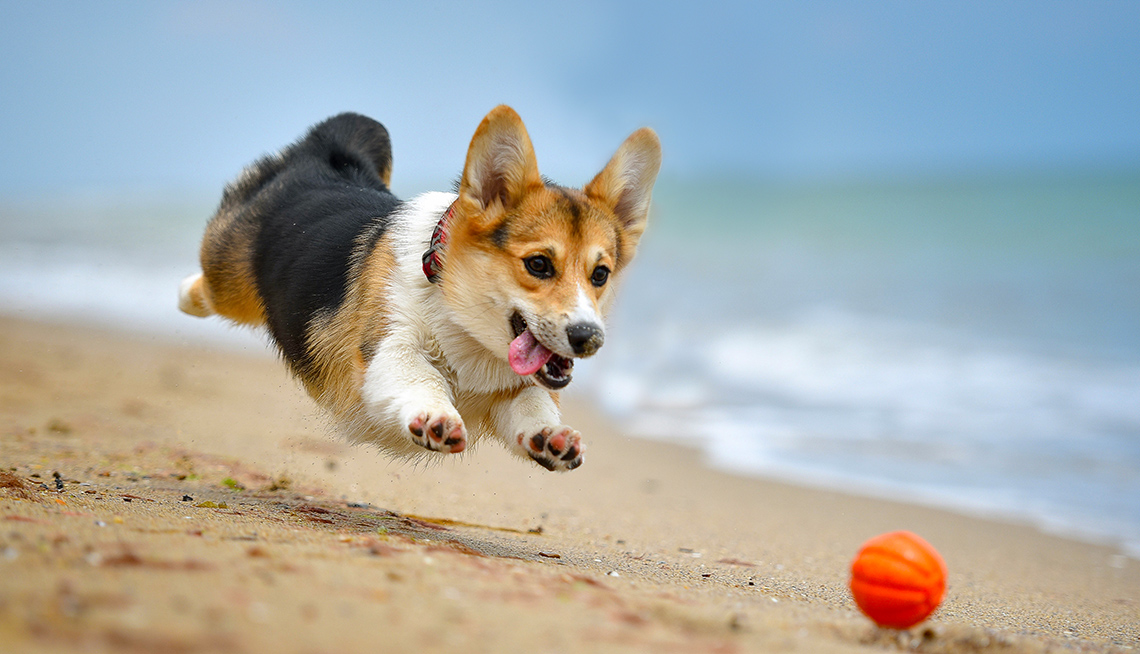
Training and upbringing
Looking at this small dog, it may seem strange to recommend turning to the literature on the upbringing and training of the German Shepherd. Experienced dog trainers claim that these breeds have very similar psychological portraits.
Before you bring your little one home, do the following:
- Remove shoes from places inaccessible to the puppy;
- Try to hide electrical wires, Internet and telephone cables behind furniture, pack them in boxes or under baseboards;
- Roll up carpets, because it is easier to remove a puddle or a pile from the floor;
- Stock up on a sufficient number of toys and improvised materials that the dog can gnaw on without harm to its health.
It will take some time for the dog to understand what is good and what is bad, and such precautions will not be superfluous at all.
The main principle in raising a Pembroke Welsh Corgi is categoricalness and consistency. Once something is forbidden, it should not be allowed again.
As for the rules of training, they are quite simple. No special methods have been developed for these dogs, since they are naturally intelligent and quick-witted. First of all, the puppy needs to be taught to respond to its own nickname. Call the Pembroke to you more often, talk to him, calling him by name. All your household members should do the same.
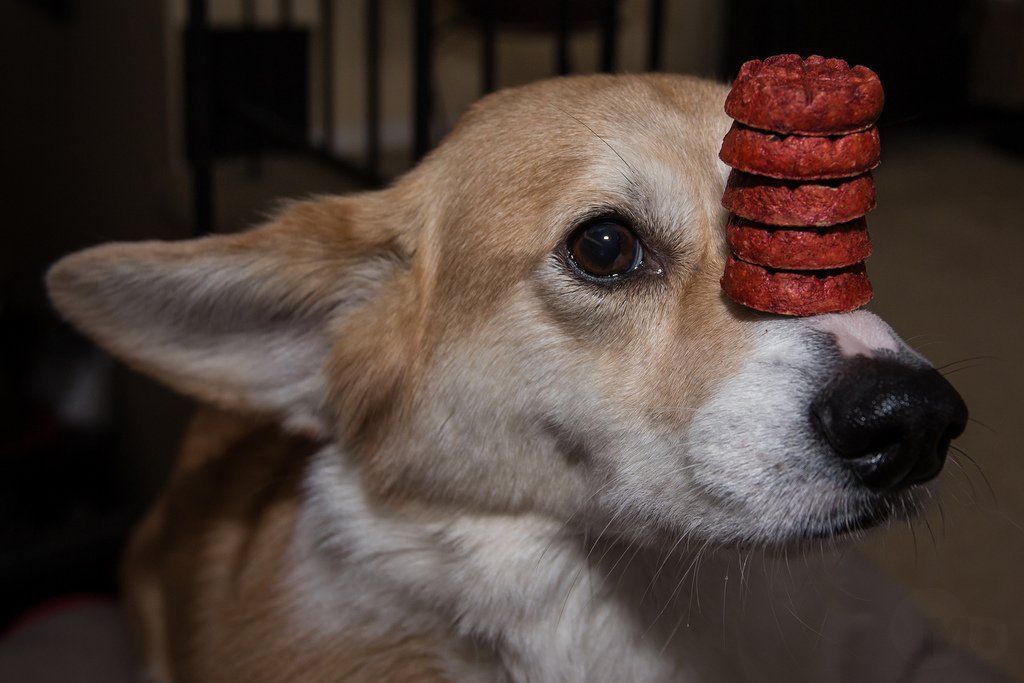
- Corgis are not shy, but they should be socialized from an early age to avoid shyness (potentially aggressiveness) when they grow up.
- Physical exercise is necessary for mental stimulation and weight control. Since they adore the company of people, they will gladly complete any tasks assigned to them by their owners. Despite their appearance, the dog is athletic, doing well with a large herd and various agility tests.
- In fact, the dog is completely unaware of its miniature size and behaves like the largest of the shepherds. It does everything to please its owner, which greatly facilitates the process of upbringing. Very attentive, loyal and endowed with an exceptional mind, it readily lends itself to training, which should ideally begin with firmness as soon as the puppy arrives at the house.
- Commands should remain consistent. Punishments should be appropriate, never leading to any form of cruelty. Your companion will obey you even better if you teach him discipline during games. Be careful not to overexcite the dog, otherwise he will stop obeying you.
- Rewarding with treats works well. He learns quickly, but this also means that he acquires bad habits very quickly. This intelligent, attentive dog immediately notices the weaknesses of his owner and uses them to his advantage. Owners should be able to quickly correct or, at best, avoid mistakes during training.
Nutrition
The Welshie is very greedy, so he quickly gains weight, which leads to serious joint problems if not controlled. It is advisable to monitor the diet and give a balanced diet adapted to age, health and physical activity. During active growth, he especially needs calcium.
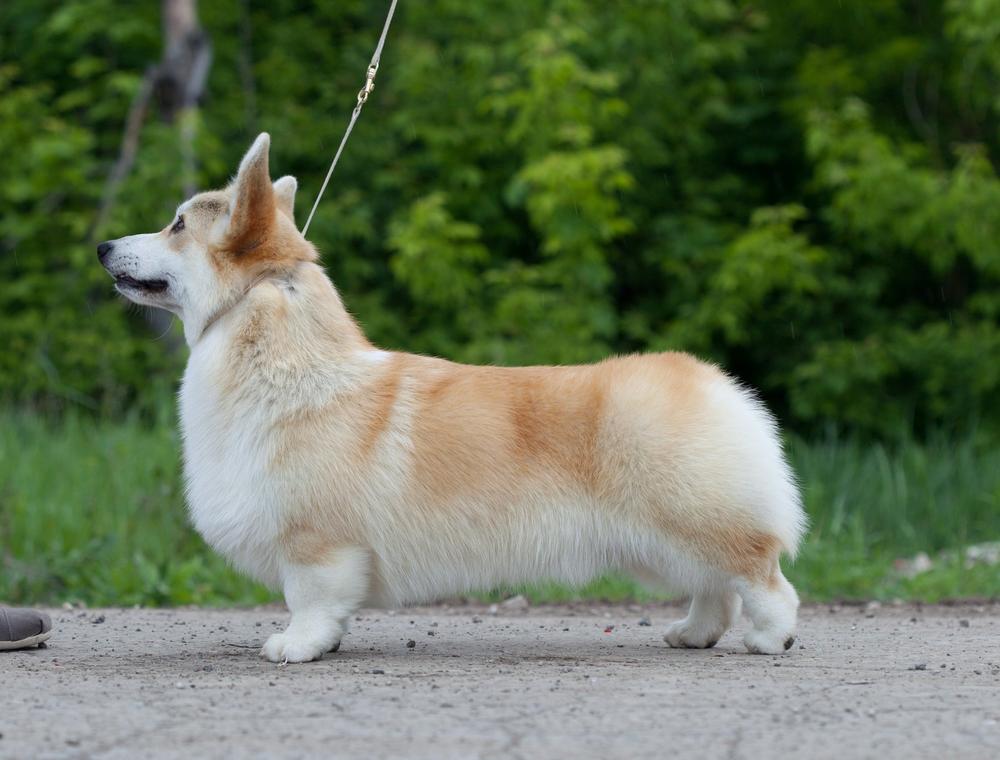
While the dog is young, you should feed it up to 3 times a day. As it gets older, two meals a day is enough. When it grows up, it is enough to follow a balanced diet 1-2 times a day based on high-quality food or homemade rations, which may include:
- raw lean meat
- boneless fish
- vegetables (boiled and fresh)
- greens
- fruits (apples, pears)
- sour milk products
- cereals
Forbidden foods:
- sweets;
- fatty meat;
- smoked meats;
- bones;
- pasta;
- fried;
- legumes.
Adding fish oil or brewer’s yeast to the diet will improve the health and appearance of the coat. There should always be fresh water in the bowl.
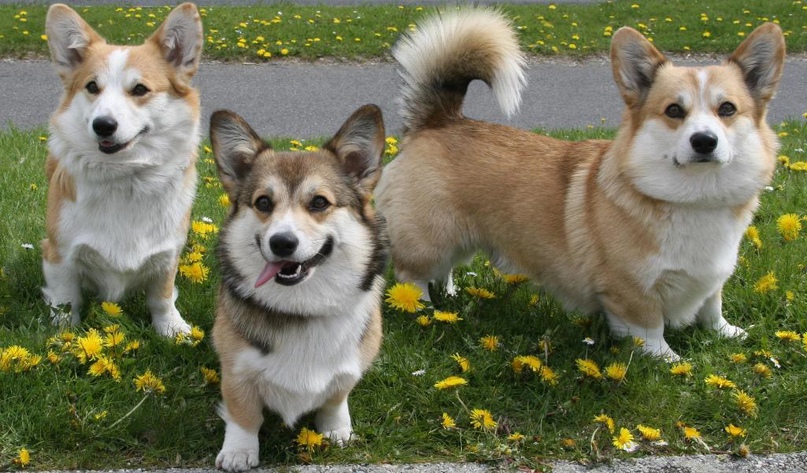
Health and diseases
Despite their resistance, like all purebreds, they are prone to certain specific hereditary diseases:
- hip dysplasia;
- epilepsy;
- progressive retinal atrophy;
- a blood clotting disorder called von Willebrand’s disease.
Due to their long body and short legs, special attention should be paid to herniated discs. As symptoms develop, it becomes difficult to recover even after surgery, it is important to create a habitat that does not put pressure on the legs.
Strictly avoid jumping off the couch or falling from such a height. Otherwise, you can easily get problems with the spine. This is their weakest point.
Other common diseases:
- cutaneous asthenia (skin diseases);
- cataracts;
- cystinuria (a disorder of the urinary system);
- retinal dysplasia;
- degenerative myelopathy;
- obesity.
According to the latest Kennel Club survey conducted in England in 2014, the average life expectancy is about 12 years.
If you monitor the health of your four-legged friend, regularly provide physical activity, and follow a proper diet, your pet can reach the proud age of 16-17 years.
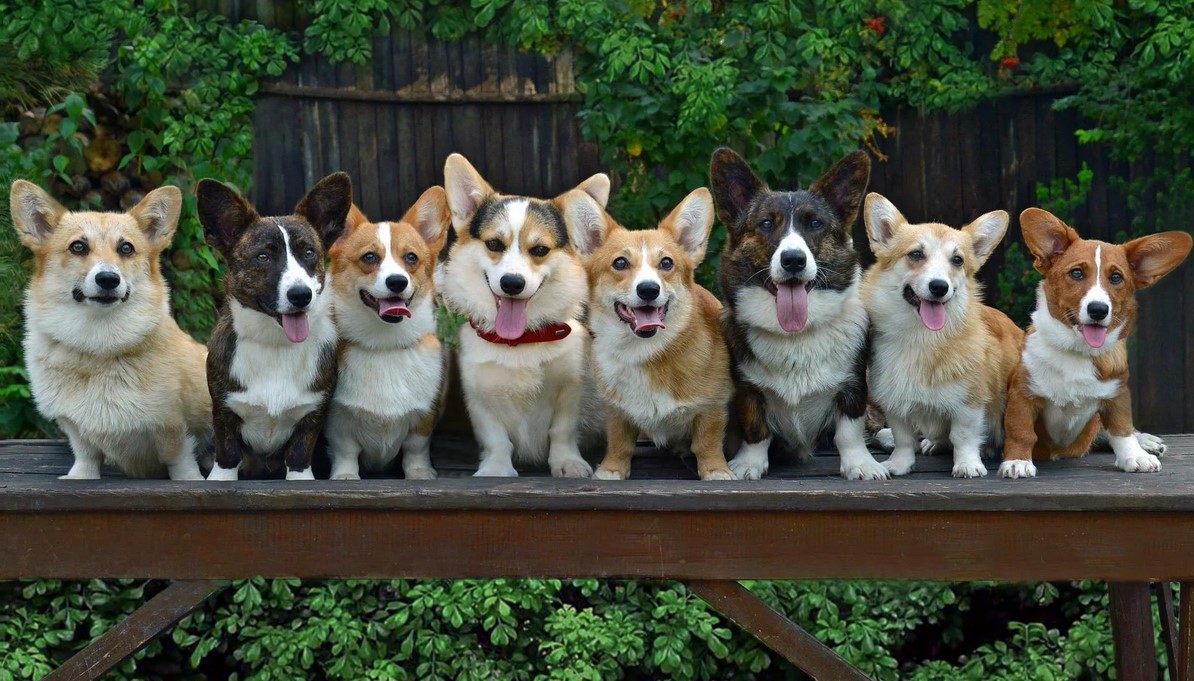
Pros and cons of the breed
If you decide to buy a Welsh Corgi puppy, you should familiarize yourself with the advantages and disadvantages of this breed. This will help you finally decide on the choice of a pet.
Pros:
- Loyalty.
- Cheerfulness.
- Easy care.
- Unpretentiousness to food.
- Activity.
- Ability to adapt to any conditions.
- Quick learning.
- Trembling attitude towards children.
- Rarely barks.
Cons:
- Needs long, daily walks.
- Independence, stubbornness.
- Wool coat requires careful care.
- Frequent complications during childbirth.
- Does not tolerate heat well.
- Tendency to overeat
The growing popularity of the Pembroke Welsh Corgi is due to the fact that they are compact and cute. No one will pass by a “cake” with rich facial expressions without paying attention. They are increasingly used in various advertisements. The ideal companion for this little fox is someone who loves to spend time with him. A great choice for owners who want a dynamic, sociable, intelligent, adapted to family life dog.


